Chapter 13 – Gwaya’elas, How We Do Things: The Development and Evaluation of Dzaxwan Curriculum
‘Nalaga Donna Cranmer
The ‘Namgis First Nation have lived in their traditional homeland since K‘aniki’lakw the transformer was here changing things. The people knew that the balance between humans and nature had to be maintained for the survival of all. With the changing times that we live in today, the balance has shifted. No longer do the fishermen take just what they need, but what big business and companies will pay for. The increasingly efficient resource extraction methods have resulted in (but are not the sole cause of) the decrease in Kwakwaka‘wakw science knowledge and accompanying value systems and practices concentrating on fisheries such as the dzaxwan.
The dzaxwan (oolichan) and t’łi’na (oolichan oil) were and continue to be staples in our diet and much more. It was used for medicine, trade and there is an important ceremony that is dedicated to the giving away of t’łi’na, called T’łi’nagila-T’łi’na (grease potlatch). Within Kwakwaka‘wakw culture this particular potlatch (feast) ceremony was the biggest (most prestigious) a chief could host.
A main Kwakwaka‘wakw teaching is maya’xala which means to treat others or things the way you want to be treated. Today some people use the English word “respect” to define maya’xala. Prior to contact a major Kwakwaka‘wakw teaching was to give words of thanks (words of prayer) before taking a resource from nature because if this did not happen then this resource could be taken away and the people would suffer. We might well ask: “In what way does this lack of respect for the dzaxwan fishery contribute to its catastrophic collapse?”
The historical paper created by the National Native Brotherhood, Indian Control of Indian Education (1972); set the stage for many First Nations throughout Canada to take over the education systems and teach their children cultural knowledge and values while teaching life skills for living in contemporary society. During this time the ‘Namgis First Nation (formerly the Nimpkish Band) in ‘Yalis (Alert Bay) established the T’łisalagilakw School. The ‘Namgis Education Board’s plan at the beginning was to offer a quality education which that blended traditional ‘Namgis and contemporary lifeways. Hence, an underlying theme of the current research was to introduce both traditional Kwakwaka‘wakw Science Knowledge and Western Science as different but complementary forms of understanding the world in the science classroom.
Purpose
The purpose of this research was to develop and evaluate a science curriculum on the dzaxwan at the Grade 6/7 level that would be located within the Science K-7: Integrated Resource Package, (2005). From the data collected from Elders and other sources prior to the development of the curriculum, I attempted to:
- Identify traditional ways of being in relationship with the land that are integral to a Kwakwaka‘wakw worldview (Indigenous Science (IS))
- Identify traditional concepts, skills, and attitudes that are consistent with Western Science (WS) and can be integrated into a science curriculum
- Develop activities and teaching methods that are culturally appropriate.
- Develop culturally appropriate evaluative techniques to determine the effectiveness of instruction (increasing knowledge, skills, and positive attitudes). (Cranmer, 2009)
The Curriculum
It was with the guidance and willingness of t’łi’na makers to pass on their knowledge regarding the preservation and rendering of the t’łi’na that led to the creation of the cross-cultural science unit Gwaya‘elas—How We Do Things Kwakwaka‘wakw Dzaxwan. The curriculum was taught by me with help from the principal and Grade 6/7 teachers at the T’łisalagilakw School. Local Elders, knowledge keepers, and resource people familiar with Kwakwaka‘wakw science knowledge and wisdom practices were called upon to visit the class and share their knowledge. The IS and WS lessons were woven together to educate students that both are equally important and can at times complement one another.
Prior to instruction, I developed many instructional activities and had many ideas about how I would evaluate the students’ learning. Importantly, while teaching the curriculum, I found that the teaching and evaluative methods seemed to take on a life of their own, that is, culturally appropriate activities, methods of instruction and evaluative procedures evolved during the implementation phase. I kept a researchers’ journal to record information such as student engagement and their experiences with specific activities during instruction, and checked to see students’ understanding of specific concepts and skills, for example, the accuracy of building models and equipment used in the processing of dzaxwan.
School and Participants
‘Yalis is located on Cormorant Island on the north coast of British Columbia and is the traditional homeland of the ‘Namgis First Nation. The T’łisalagilakw School is run by the ‘Namgis Education Board in ‘Yalis. The student population ranges between 80-100 students. Students begin at age four in nursery school, which is a Kwak’wala immersion program, then to Kindergarten and onto Grade 1 through to Grade 7. The majority of the students are either members of the ‘Namgis First Nation or the Whe-la-la-u Area Council. The Grade 6/7 class was made up of all First Nation students, 10 boys and 7 girls.
The Students’ Experiences during Instruction
April is the time of year that the dzaxwan return to Dzawadi (Knight Inlet) and this year it was also the month that I was welcomed into a Grade 6/7 class to teach 8 lessons over nine days. While I was teaching my lessons one of the girls in the class was up at Dzawadi with her parents making t’łi’na.
Lesson one was designed as a way for myself as the teacher and researcher to assess the students’ prior knowledge and experience of the dzaxwan. Students were asked to create a word web of their dzaxwan knowledge. It didn’t take the majority of students long to complete their word web. I was saddened by the lack of dzaxwan knowledge some students had, even though the majority of the students were born and raised in ‘Yalis. I thought everyone enjoys the same experience when the boats come in the spring and we get our feed of dzaxwan. This first lesson showed me that not everyone is lucky to enjoy dzaxwan. One of the students left his web blank, while 3 of the students wrote the question, “What is an oolichan?”
Lesson two was divided into 2 sections. The first examined two Kwakwaka‘wakw oral history stories regarding dzaxwan; Eulachon––The Strung Up Fish told by J.J. Wallas, and Traditions of the Ligwilda’xw told by Chief Billy Assu. Prior to handing out the stories, I discussed with the students the terms “oral history” and “myth” or “legends.” Oral history refers to the stories that have taken place in a First Nations history which have been told since the beginning of time due to having no written language. There was a time in this oral history when our ancestors had supernatural powers. I asked students if they knew the meaning of “supernatural.” One student said, “like superman.” I gave the example of having the ability to change from human form to being able to fly or have super strength. I went on to ask the students what they thought of when they heard the words “myth” or “legend.” One student answered, “A story from long ago.” I asked, “Do they think of a myth or legend as being a fact or just a story?” The majority of the class thought of myths and legends as stories and not part of history. I described how these oral histories have been handed down for generations and are a part of Kwakwaka‘wakw history. Thus, our oral stories are our truth, and are not to be considered myths or legends.
The class was divided into two groups. Each group was instructed to read the stories and be prepared to share their story with the other group when we came back together. When all the students came back together and the students were sharing the story that Chief Billy Assu shared, which told of the woman with the wings on her back who originated from Dzawadi, some students giggled. I asked, “What was funny?” One student replied, “How could a lady have wings on her back?” “Good question” I said, and reminded them of our talk about the supernatural ability of some of our ancestors. “This woman must have had some kind of supernatural ability if she had wings.”
I asked the students to think of a time when our people lived in traditional bighouses and used canoes for travel. It was a different time and way of life then how we live now. Our ancestors lived in their traditional areas for hundreds and thousands of years before the Europeans arrived. Their day-to-day life was full of Indigenous Science: catching and preserving food, making medicines, designing canoes, and building bighouses without the tools and machinery that we use today to construct large buildings (Figures 13.1 & 13.2). They also cared for and respected all of creation: the plants, animals, rivers and forest.
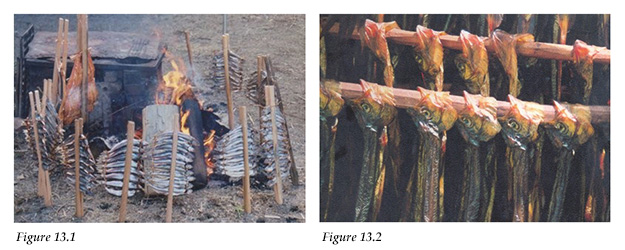
Figure 13.2 ▲ Wayut’an—half smoked dzaxwan after being smoked for 2 to 3 days. Photo by Donna Cranmer (1996).
The students were then asked to create a scientific drawing of an oolichan. Photographs of oolichans (Figure 13.3) were passed around the class then posted on the board. This activity was especially important since some of the students had never seen an oolichan. Each student received the Fact Sheet Physical Description of the Oolichan. Students were asked to observe carefully, give the scientific name, exact measurements, draw the oolichan using clean lines, and label four body parts. Some students got right to work while others seemed to have difficulty getting started and completing their drawings.
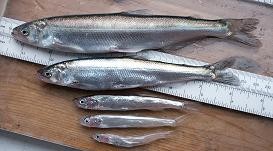
In the life cycle lesson students were introduced to many new scientific words. They found it fascinating that when oolichans move from the salt water back into the fresh water they resorb minerals from their teeth and scales to help in the reproduction process. These fish of the smelt family lay eggs in very small gravel. Students were given photographs of oolichan eggs that had been deposited in the gravel, and asked to identify and count the number of eggs. Some of the students found the oolichan eggs among the gravel easily, while others had trouble at first telling the difference between the gravel and eggs. One student questioned “How could an oolichan reabsorb [sic] its teeth?” Students were amazed at the amount of eggs that an oolichan lays. One of the comments was “How could a fish that small hold 25,000 eggs?”
Students recognized the similarities between the life cycle of salmon and oolichans—that they both begin life in fresh water, migrate to salt water and then return to fresh water and to the same stream and location to spawn, and begin the cycle again. Scientists refer to fish that ascend rivers to the sea as anadromous.
The oolichan food web lesson began with a discussion of predator-prey relationships, food chains, and food webs. Photographs were posted on the bulletin board of the different animals that oolichans as predators eat (phytoplankton, zooplankton, krill), and of the animals that eat oolichans (salmon, eagles, seagulls, seals, humans). Two examples of oolichan food relationships were discussed: a food web of oolichans in salt water and a food web of oolichans in both salt and fresh water. The students understood the concepts of food chains and webs by the examples they gave during the discussion. One of the girls gave the following example, “We eat salmon and seals eat salmon…sometimes we eat seals and whales eat salmon.”
When the topic of fish farms came up, one of the students pointed out the issue of the extremely large amount of sea lice often found around fish farms and how they affect the small, wild salmon fry that pass by the fish farms. Another student questioned, “How does it affect the salmon fry?” I asked, “Does anyone know the answer to this?” No one responded. I explained that sea lice have been a part of life in the ocean, but because of the large population of fish in the fish farm pens there are also extremely large populations of sea lice in and around these farms (Krkošek, M. et al., 2007) and these sea lice attach themselves to the wild fry that are making their way out to the ocean. If that little fry has too many sea lice attached to it, how can it make its way out to the ocean?
The students were asked if they knew what plankton was. No one knew the answer to this question. A brief discussion took place explaining that plankton are tiny plants and animals that are so tiny that they drift in the ocean and most can’t be seen with the naked eye. Most plankton can only be seen with a microscope. One of the students commented, “I’m never going in the water again if I get covered with invisible critters.” I explained that plankton have always been in the salt water, they are the foundation of the ocean food chain, and they don’t harm us.
The food chain discussion was a good introduction to the Food Chain Game. The class was divided into four teams and each team was assigned one of the members of the food chain: oolichan, salmon, seal, and man. Popcorn was sprinkled on the playing area and represented the plankton. All students were given plastic bags marked with masking tape which was their “stomach.” The students who represented the oolichans were allowed on the playing area first and had one minute to fill their “stomachs” with plankton (popcorn). When the minute was up the other animals were allowed on the playing area. As players were tagged by a different animal in the chain they had to give up their “stomachs” and leave the playing area. The students played the game twice before we went back to class and discussed what they had learned during the game. It was rewarding to see the students moving around outdoors and having fun playing the Food Chain Game.
During the class discussion, the topic of the environment came up. One of the students mentioned that he saw on the internet that, “Out in the middle of the ocean there is an island of garbage.” I’d never heard of this before but asked them, “If there is such an island out there, how do you think this affects all the life in the ocean?” One student responded, “That can’t be good for the animals that live there.” We talked about how we mistreat the rivers and oceans, and this has an effect on the environment around us even if it we think it is small.
Lively discussions followed the game about habitat and how oolichans and salmon have specific habitat requirements, and how pollution or the decline of one organism effects the food chain and of course the oolichans. Other issues that were discussed included oil tankers, oil spills and sea lice around Atlantic salmon fish farms located in our traditional territories. The students had a thoughtful discussion on human’s lack of respect for the environment and how they can seriously affect the oolichans and all the other life that live in the ocean.
The next lesson engaged the students to build a model of a ‘lap’as (oolichan pit). The lesson started with a discussion about the Kwak’wala word maya’xala. Many of the students nodded their heads when asked if they knew what this word meant. One student stated, “Doesn’t it mean respect?” This is one of the most important Kwakwaka‘wakw teachings—treating others, nature, plants and animals and all things the way you would like to be treated. Non-Kwakwaka‘wakw use the word respect. I felt it was important to begin this lesson with the giving of thanks and the way in which the ancestors of the Kwakwaka‘wakw were always giving words of thanks to the resources prior to taking what was needed. I asked students, “When do people usually pray?” “In church,” was the answer. I shared Arthur Dick’s story of how his Grandfather always gave words of thanks or prayed when he shot a deer or was pulling up halibut. It was a part of everyday life, not something that was just done on one special day of the week.
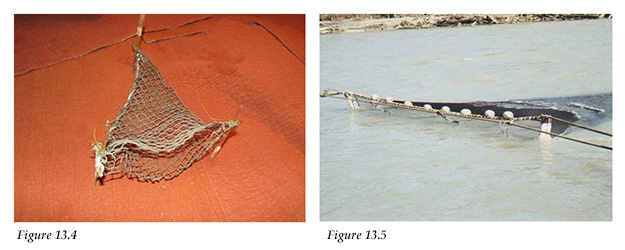
Figure 13.5 ▲ Tagał showing anchor posts used in Dzawadi, Knight Inlet, with entrance to the net suspended below. Photo by Arthur Dick, Jr. (2002).
During this unit of study I made arrangements for a t’łi’na maker to visit our class and share his wealth of traditional knowledge. I reminded the students to maya’xala (be respectful of) our visitor, and that their behaviour not only reflected on themselves, but on our school and their families.
O’waxalaga’lis Chief Roy Cranmer visited our class to talk about fishing and the process of making t’łi’na. He explained how the t’łi’na making process worked with the aid of a miniature samgat’si (cooking box), awayu (skimmers), g’ala (shakers) and tagał (conical net) that he loaned to me to use with the class. Figure 13.4 is a photograph of the miniature tagał that was used to show the students the way it worked. The three black arrows indicate the posts, which prior to the 1960’s, would have been pounded into the river bed to hold the net in place. He told the students that the DVD called T’łi’’na: the Rendering of Wealth (1999) showed the process of making t’łi’na, and asked if we could watch it and if there were any questions he could answer them. When the men were drag seining we stopped the DVD and Owaxalagalis explained that this is how they fished in Dzawadi (Knight Inlet) in 1997, and that today they have gone back to using a special net called a tagał. Figure 13.5 shows the tagał that was used in Dzawadi in 2002 and continues to be the method used today. The method of anchoring the net in place is one of the many differences between the modern tagał and the one used before the introduction of the drag seine method of fishing (Figure 13.6).
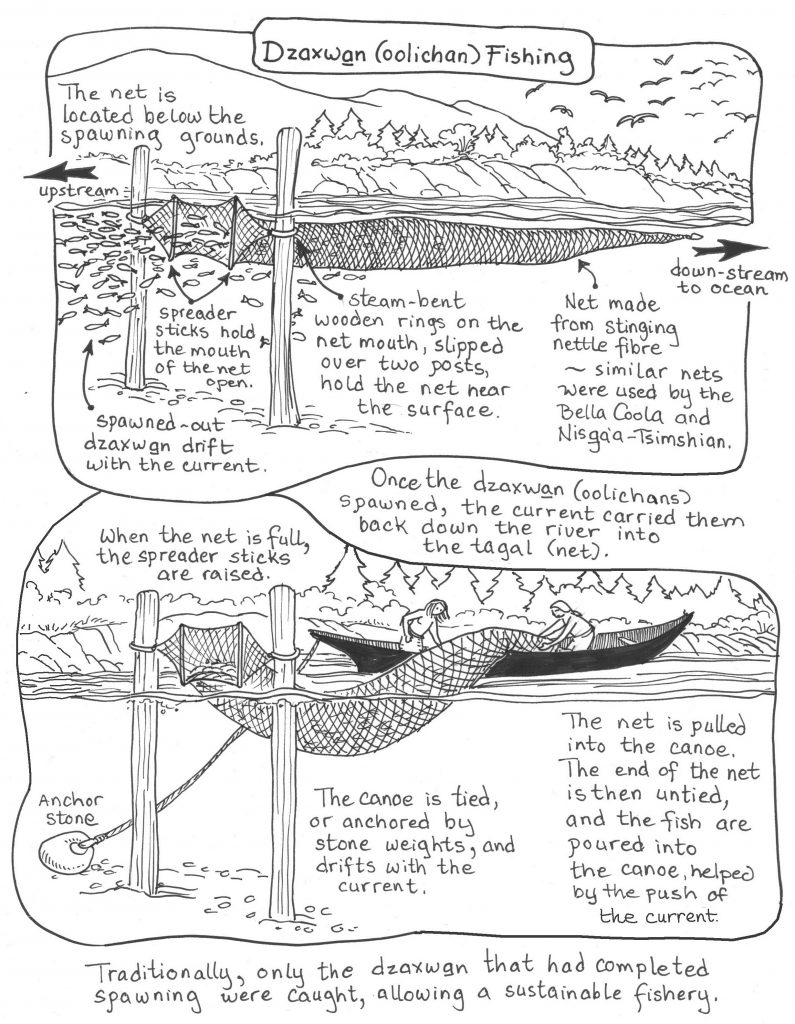
Owaxalagalis explained the reason for changing fishing methods was due to the changes in the river. The river has changed since his first visit in 1961, and is now very shallow in some places. One of the students asked, “How is the river changing?” Owaxalagalis explained that when it rains in Knights Inlet, because of all the trees that were taken out of the valley due to logging, the river rises almost immediately. There are a lot of log jams in the river that never used to be there, and the size of the glacier at the top of the river is getting smaller. Owaxalagalis shared many things with the students including; how to make a ‘lap’as (pit), fishing methods, putting the dzaxwan in the ‘lap’as (Figures 13.8, 13.9 and 13.10), and then moving them to the samgat’si (cooking box), cooking the dzaxwan, and environmental concerns.
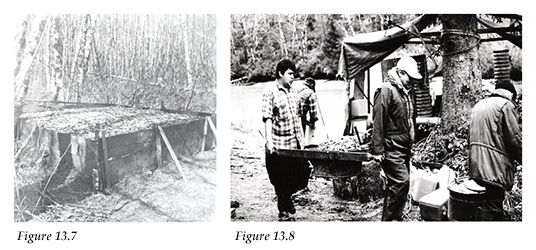
Figure 13.8 ▲ Arthur Dick Sr. and Jr. carrying a tub of dzaxwan. Photo by Joanna Recalma, Dzawadi (1997).
The second part of this lesson was a discussion about building a ‘lap’as. Photographs of ‘lap’as in Dzawadi were posted on the board. During his visit, Owaxalagalis informed us that he harvested about 6 tons of dzaxwan to fill his ‘lap’as in the 1990’s.
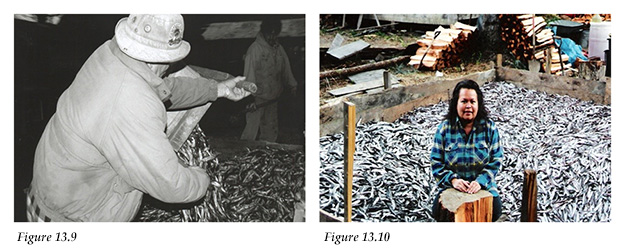
Figure 13.10 ▲ Barbara Cranmer sits in front of loaded pit. Photo by Arthur Dick, Jr. (1998).
I said to the students, can you imagine the amount of t’łi’na they rendered from that one ‘lap’as? The photo from the 1998 pit (Figure 13.10) has about 6 tons, how many tons do you think are in the old ‘lap’as? (Figure 13.7). The amount of t’łi’na rendered is determined by several variables, time the dzaxwan lie in the ‘lap’as, the weather and temperature, humidity and the number of dzaxwan.
It was logistically difficult to house students, especially elementary students, at the camps for 2 or 3 nights since the dzaxwan fishing camps are located some distance away from the schools (8 hour seine boat ride). It was necessary to teach about the harvesting and rendering of the dzaxwan through photographs, Elder input and by building a miniature ‘lap’as.
While the boys were creating the miniature ‘lap’as (pit) outside with Anthony, the remaining students were given the fact sheet Methods of Fishing for Oolichans and the class discussed the evolution of fishing methods. The students had already heard Owaxalagalis talk about the tagał, kanayu (dipping net) and seine net the day before and had seen examples of the crew drag seining and using the dip net in the DVD. The discussion of fishing methods focused on the two categories: passive and aggressive.
The last two lessons focused on the making of t’łi’na and the ceremony of giving it away as is customary within Kwakwaka‘wakw culture.
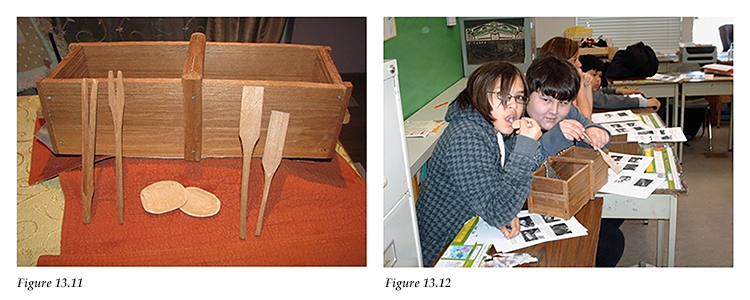
Figure 13.12 ▲ Students checking out the tools and miniature cooking box. Photo by Irene Isaac (2009).
A fact sheet, Making T’łi’na, illustrated the step-by-step process of rendering the oil from the dzaxwan. Owaxalagalis shared with the students that the water in the samgat’si had to reach just the right temperature before the dzaxwan could be added. He stressed that the water was never to boil. He went on to explain that the two paddle-like tools that are used to pour the dzaxwan over the stick as they are added to the heated water in the samgat’si (Figures 13.11, 13.12). The two long sticks with the slits at the end are shakers. When the dzaxwan begin to float, these two tools are used to scoop the dzaxwan out of the water, tap the side of the samgat’si, and shake the dzaxwan meat from the bones. Finally, the little oval shaped scoops or awayu (skimmers) are used to skim off the oil that floats to the top. Some of these awayu are carved in the shape of a large clam shell and range in size from very small to very large. As the area of oil to skim becomes smaller so does the size of the awayu used to skim.
I explained to the students that during my dzaxwan research one of the Elders I interviewed, Chief Jack Nolie, gave me his awayu because he wanted the knowledge to continue to be passed on. I showed the awayu to the class and explained that it was used to skim the dzaxwan oil from the top of the samgat’si (Figure 13.13). This particular awayu has an eagle wing on the back side (Figure 13.14). I asked the students, “Why do you think the carver of this awayu carved an eagle design on the tool?” No one answered. I asked, “How are these two animals, the eagle and oolichan connected? Think back to the food chain discussions.” Finally, one of the students recalled, “Well the eagles eat the oolichans when they come back to the river.” I added that in Dzawadi when the oolichans are heading up the river to spawn hundreds of eagles can be seen in the branches of the trees. Another student added, “Maybe it was a crest of the owner.”
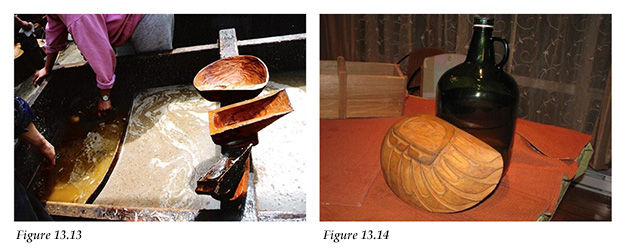
Figure 13.14 ▲ Awayu (skimmer) showing an eagle wing and t’łi’na. Photo by Donna Cranmer (2009).
I showed the students a gallon of t’łi’na (Figure 13.14) and shared with them that older members of my family call it “Our gold, it is so valuable.” I asked, “How do we use it?” One of the girls said, “We dip our smoked fish in it.” I told them that it is also used as a medicine. I remember seeing my great grandfather Charlie Dick take a couple of spoonfuls of t’łi’na and swallow it down without any food. We always heard that it kept us healthy—kept the sickness away. It was also heated and rubbed onto the chest of someone suffering from a cold or congested chest.
During the final lesson we discussed two ways in which the Kwakwaka‘wakw used the t’łi’na in ceremony and in trade. Before we discussed T’łi’nagila (grease potlatch), the Kwakwaka‘wakw ceremony of giving away t’łi’na at a potlatch, I asked the students, “What is a potlatch?” The students responded:
- When a chief will show his family’s dances.
- When Indian names are given.
- When someone dies, their family has a memorial potlatch.
- When dances are given to younger family members.
- It means to give.
I was impressed with the students’ answers, and knew that some of them had participated in their own family potlatches.
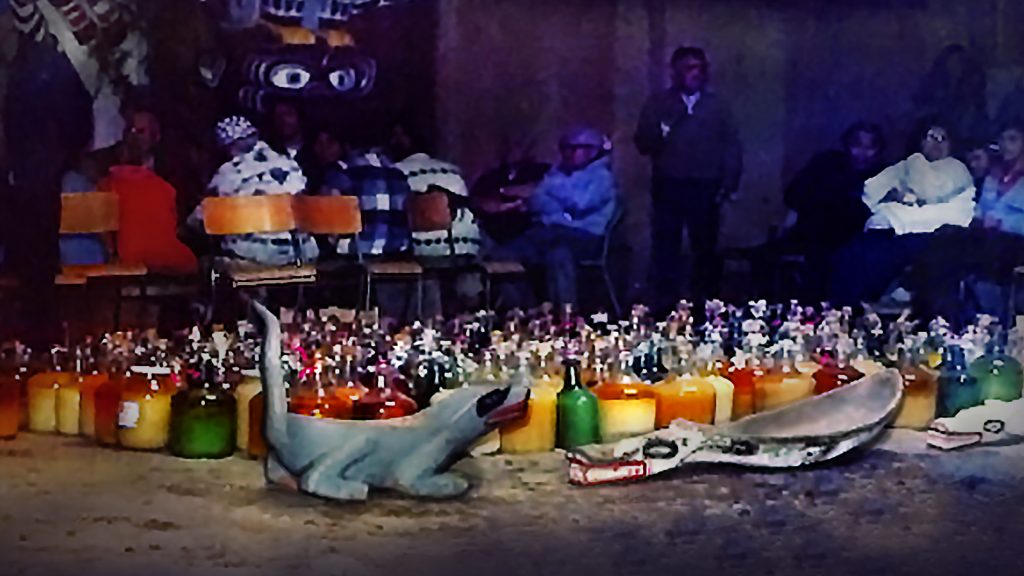
I added that prior to the Europeans coming to our territory our people had many ways of remembering and recording information even though they had no written system. The potlatch was a way for a chief to show his ancestral links to the songs, dances, names and masks that he owned. Host chiefs would invite tribes to witness as he opened his box of treasures, showing dances, songs, handing down names, and privileges. These potlatches took place as memorials for loved ones who had passed on, to mark marriages, pass on names, dances, songs, and even rights to hunting or trapping grounds. The witnesses were paid by the host chief and this is how the history was passed on. The gifts given at these potlatches have changed over the years. Prior to contact a chief’s family would save for years animal furs, woven blankets, baskets, and hats to give at a potlatch. Today the majority of items given away at a potlatch are purchased from department stores: towels, laundry baskets, kitchen utensils, and blankets. The one thing that has remained the same over the years is the giving away of t’łi’na. There are some families that continue to host potlatches where this valued gift is given. During a regular potlatch the gifts are given after the host has shown all his family’s treasures. During a T’łi’nagila (grease potlatch) the t’łi’na is usually given away after the mourning songs are sung and the copper talk takes place, and before the family dances are shown. Before distributing gifts to the guests whether it is dry goods that is given at the end of a potlatch or t’łi’na, the chief’s family lays all the gifts out on the floor of the bighouse. During the T’łi’nagila special feast spoons and dishes are brought out that may be carved with the crests that the chief has a right to use.
In front of the gallons of t’łi’na in Figure 13.15 are a wolf feast dish and two wolf feast spoons which belong to Arthur Dick’s family. The tradition remains strong among the families that continue to potlatch. In Figure 13.16, I asked students to notice the same ceremonial objects carried by the matriarchs of Art Dick Jr.’s family in 1999 at his father’s memorial. These objects are still being used twenty-five years later.
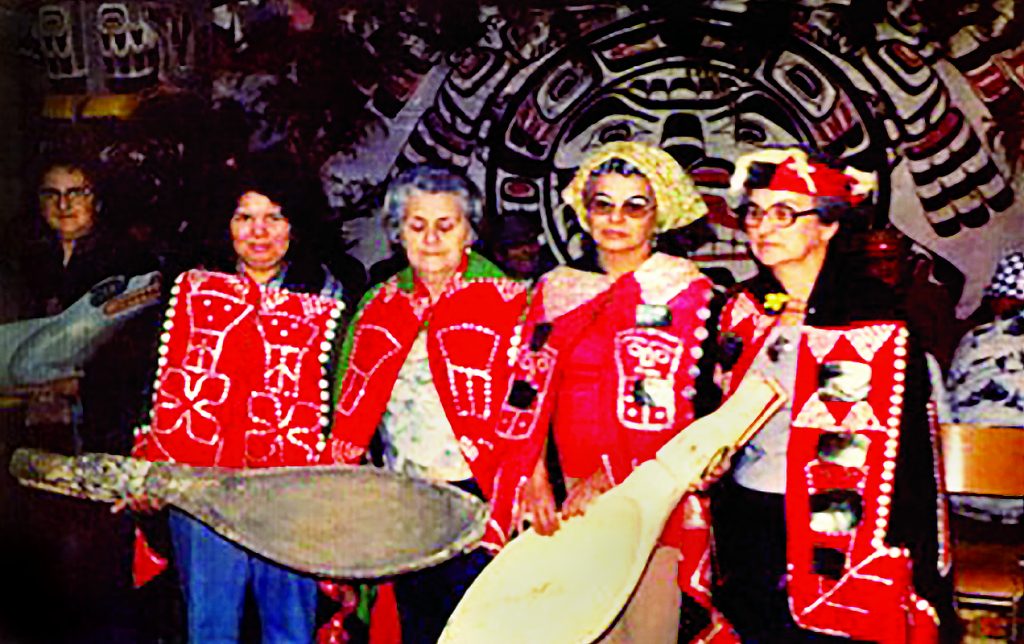
In the DVD T’łi’na: The Rendering of Wealth (1999) Art Dick Sr. and Jr. refer to this ceremony as the highest (most prestigious) potlatch a chief can give. I asked students who had been to a T’łi’nagila to pair up with a student who had not been to a T’łi’nagila and tell what they remembered. One of the young girls said, “My uncle gave away grease at our family’s memorial potlatch for our Grandpa and Ada.” I asked, “How many students have seen such a potlatch?” More than half the class said they had attended such a potlatch. The following is a list of memories of T’łi’nagila shared by the students:
- Feast songs were sung.
- Speeches are given by chiefs.
- Sometimes t’łi’na is poured onto the fire.
- Sometimes 20 lb. (9.07 kg) bags of flour are also given out.
- Boxes or baskets of traditional food are also included: homemade jam,
canned fish, seaweed, jarred clams, and k’awas (dried fish).
I explained to the class that the potlatch recalls our history and how our family connects to the ancestors form our origin stories that go back to the time of the supernatural beings. I asked the students to think back to the origin stories that talk about the dzaxwan, and imagine how long Kwakwaka‘wakw people have been hosting T’łi’nagila. “It’s been a long time,” one of the students responded.
The final discussion in class was about the trade routes called “grease trails” that our people used to travel when trading with neighboring tribes. In his book Following the Path of our Ancestors (2005), knowledge keeper ‘Waxawidi William Wasden tells of the ‘Namgis First Nation ancestor U’małame’ who founded the grease trail connecting the ‘Namgis with the tribes on the west coast of Vancouver Island. For almost one hundred years the trail was not in use, but in 1999 four men from our village travelled over the ancient trail carrying t’łi’na to share with west coast relatives at the canoe gathering in Ahousaht. During this journey on the grease trail, a song was composed by ‘Waxawidi William Wasden to commemorate the reopening and use of this ancient trail. Many of the students knew the song but did not know what it was about. I told the students that in Ahousaht when those four men and their crew of pullers (people that paddle in the canoe) landed they carried t’łi’na off their canoe to give to the Ahousaht chiefs. That is the first time that song was sung and danced.
For our final class we hosted a mini feast and invited our parents to come and see what we had learned. I asked for student volunteers to create a drawing that we could use as an invitation to our luncheon. Students helped to prepare food and set up the gym for this luncheon. We were lucky to have our feast when a boat had just come out from Knights Inlet, and they shared some fresh oolichans with us. The parents and students were able to have a feed of fresh fried dzaxwan. Smoked dzaxwan was also on the menu along with yusa (fish soup), ka’aba’wakw (baked fish), lak’astan (fried seaweed) and of course t’łi’na. Students were reminded that they were the hosts and that in keeping with Kwakwaka‘wakw customs, the host always serves his guest first. It was a wonderful way to end the two weeks Gwaya‘elas curriculum unit—feasting with our parents and Elders on traditional food.
Evaluating Students’ Learning
This science unit was a combination of Kwakwaka‘wakw IS and WS concepts. It is a strong held belief that for our First Nations children to be successful they need to know where they come from; they need to know their traditions and history. One of the ways of showing students Kwakwaka‘wakw traditional science was by bringing community members into the classroom to share their knowledge. Traditionally this is how the knowledge was passed on, with older community members sharing their knowledge. The method of evaluation for this unit was both traditional and modern. The students:
- Created a web of their prior dzaxwan knowledge and their post instruction dzaxwan knowledge.
- Read and discussed two origin stories of the dzaxwan.
- Created scientific drawings of dzaxwan: labelling four body parts, giving the scientific name, Kwak’wala name, and measurements.
- Participated in the Food Chain Game and identified predator-prey relationships within a food web.
- Brainstormed and ordered into a proper sequence a list of what takes place during a T’łi’nagila (grease potlatch).
- Listed the gifts that were given at a potlatch prior to contact and today.
- Created a chart of the life cycle of the dzaxwan; illustrating the measurement of the fish at each stage of their life, length of time in each stage and name of each stage. Made connections between stages of the life cycle and habitat requirements.
- Answered a mini quiz with review questions from the first four lessons that covered: oral history, different stages of the life cycle, food webs, predator-prey relationships, habitat, environmental concerns, and human effects on the dzaxwan population.
- Studied, compared, and described the many methods of catching dzaxwan: tagał-conical trap, drag seine, and dip-net.
- Studied and described the process of making t’łi’na.
- Listed reasons for the decline of the dzaxwan.
- Participated in a question and answer period during the visit by a local t’łi’na maker to the classroom.
- Examined a map provided by the ‘Namgis Treaty researcher and found and traced the ancient grease trail walked by ‘Namgis past and present.
- Created a miniature model of a ‘lap’as (dzaxwan pit).
- Explored variables that determine the time dzaxwan require to cook in the ‘lap’as: weather, temperature, humidity, and the number of dzaxwan.
- Made connections with the concepts: decomposition, heat and temperature, boiling point, and food preservation.
- Demonstrated the Kwakwaka‘wakw teaching of maya’xala for their parents and Elders at the final celebration by extending a personal invitation, getting chairs, setting tables, preparing plates of food and serving Elders.
- Created a dzaxwan drawing using traditional elements of Kwakwaka‘wakw art.
- Exhibited maya’xala to the Elders and community members who visited the class during a traditional dzaxwan knowledge lesson.
While gathering research for this curriculum the community members that were interviewed all stated that they were shown firsthand what to do, and when the old people felt they (the learner) were ready, they were left to do the job. From a First Nations perspective this was a very formal process. In earlier years, children experienced the sharing of dzaxwan (oolichan), the distribution of dzaxwan throughout the community, and would have learned how to show respect to the dzaxwan as part of the dzaxwan grease rendering process. The teaching took place as day-to-day living happened. The valuable dzaxwan knowledge continues today with the families that continue to travel to Dzawadi (Knight Inlet). The sad fact today is that less than a dozen children have the opportunity to experience the dzaxwan teachings on the land, where as in the past all Kwakwaka‘wakw children enjoyed and experienced dzaxwan teachings in Dzawadi.
During this unit, I made many observations myself of what students were accomplishing in class. I found myself falling back into wanting to just evaluate students using methods I learned during teacher training. I created a quiz and asked the students to fill out the questions. I realized later that all this information would have come out in the final knowledge web they created at the end of the unit. It is hard to break methods of teaching and evaluation learned during formal teacher training. The majority of students came away from this unit with a greater understanding of Kwakwaka‘wakw dzaxwan and the care we need to take of our environment so we can maintain our traditions.
Future Possibilities
It could be possible in the future within this unit or after this unit to focus on more abstract concepts such as heat and temperature and using the dzaxwan as a catalyst for further exploration. Instruction could include science concepts that are included in the upper elementary and high school science programs, but are difficult for students to understand such as aerobic and anaerobic bacteria, hot and cold, heat and temperature, the measurement of heat, and the theory of kinetic energy (molecules in motion).
There are a variety of ways we could more closely replicate the rendering of oolichan oil. For young children we could make papier-mâché figures to represent the oolichans. For older students, we could use frozen oolichans to experiment with different ways of modeling the process of fermentation and rendering of the oil. Traditionally, after the oolichans were allowed to ferment and begin to “break down” in an open wooden pit, the softened fish were placed in a wooden cooking box or even a canoe and heated with hot rocks. Temperature control was important—the mixture must not boil. Heating rocks in an open fire can be dangerous (some types of rocks crack). In the classroom we could use an electric frying pan to simulate the cooker and skim off small quantities of t’łi’na with a spoon. (Note: in an open pit aerobic bacteria break down muscle tissue and help free the oil.) What would happen if the fermentation step involved anaerobic bacteria—if they were kept in a warm sealed jar? (Note: anaerobic bacteria will cause the fish to rot.)
One of my dreams when going through my teacher’s training at Simon Fraser University was to eventually teach our own children our Kwakwaka‘wakw history and culture. Due to my own lack of high school science courses I was unable to achieve a minor in biology as part of my B.Ed. degree, which was my original goal. By creating Gwaya‘elas, How We Do Things: Kwakwaka‘wakw Use of Dzaxwan, I gathered and shared the knowledge about this important resource and showed the children the ‘Namgis peoples’ science. This may result in some of our students wanting to explore other traditional science areas.
With very few Kwakwaka‘wakw teacher resources readily available to teachers in ‘Yalis and on northern Vancouver Island, it is hoped that an important outcome of this research will be the development and evaluation of usable curriculum resources for the Kwak’wala speaking people, as well as other communities. I believe that it is crucial that First Nation students participate in school science and as a ‘Namgis First Nation educator and parent I see the need for such curricula to be developed. In writing this chapter, I found myself struggling with the challenge of finding where Kwakwaka‘wakw IS fits with WS or trying to make it fit. Looking at the BC Ministry of Education documents and attempting to see where this dzaxwan IS fits, I have come to the conclusion that it does not have to fit perfectly in order to be useful. Kwakwaka‘wakw science, or IS, is what has sustained our people on this coast since the beginning of time. It can stand alone, and it can stand beside Western Science, but it does not have to fit within it or as an add-on. While coming to this conclusion I know from experience that we First Nations people sometimes give less credit to our own knowledge and ways of viewing the world; I often remind myself that our people would not have successfully lived to see this century if it had not been for our ancestors’ science knowledge and way of life.
While teaching the Grade 6/7 class at T’łisalagi’lakw school it became apparent to me that we need to teach our children as soon as they enter our school the following, “’Namegan’s o’am dla‘wans awi’nagwisex—We are one with the land.” These are words that were shared that summer by our ‘Namgis Chief Kwaxalanukwa‘me’ ‘Namugwis William Cranmer as our people returned to many of our traditional village sites within our territory. I was excited by the knowledge that was shared about what our people did at places like: Anutz Lake, Wa’as Lake and the Gwa’ni River, visiting areas where traditional food was gathered, and learning about the plants that our people used for medicine. I imagined visiting these sites during the school year and ensuring that our children would know the teachings of our ancestors about the land. The passing on of this valuable traditional knowledge would give our children a sense of belonging and knowledge of who they are as Kwakwaka‘wakw.
I would like to thank t’uuca č’apac Natika Bock, for contributing lesson plans related to Indigenous Knowledge and Western Science. Gilakas’la for sharing your knowledge of science concepts and teaching strategies.
REFERENCES
Cranmer, B. (Director, Producer), Green, C. (Producer), & Jacob, S. (Producer) (1999). T’Łina—The rendering of wealth. [Motion Picture]. Vancouver, BC: National Film Board of Canada.
Cranmer, D. (2009). Kwakwaka‘wakw Dzaxwan: The development and evaluation of a cross-cultural Oolichan fisheries curriculum. Masters project, University of Victoria, Victoria, BC. Retrieved from http://hdl.handle.net/1828/2192
Drake, A. & Wilson, L. (1991). Eulachon: A Fish to Cure Humanity. UBC Museum of Anthropology Museum Note, 32. Vancouver, BC: UBC Museum of Anthropology.
Duff, W. [Prior to 1965]. Traditions of the Ligwilda’xw. Unpublished interviews. Copy archived at U’mista Cultural Centre, Alert Bay, BC.
Krkošek, M., Ford, J. S., Morton, A., Lele, S., Myers, R.A., & Lewis, M.A. (2007). Declining wild salmon populations in relation to parasites from farm salmon. Science, 318(5857), 1772-1775. Retrieved from http://dx.doi.org/10.1126/science.1148744
Macnair, Peter L. (1971). Descriptive notes on the Kwakiutl manufacture of eulachon oil. Syesis, 4, 169-177.
Wasden, W. (2004). K’amdam sa Gwa’ni. Unpublished Transcription of a Kwak’wala song. U’mista Cultural Centre, Alert Bay, BC.
Wasden, Jr., W. ( Hiłamas), et al. (2005). Kas’ida‘asa san’s Galga’lis: The Path of Our Ancestors. Victoria, BC: Trafford Publishing; U’mista Cultural Society.

